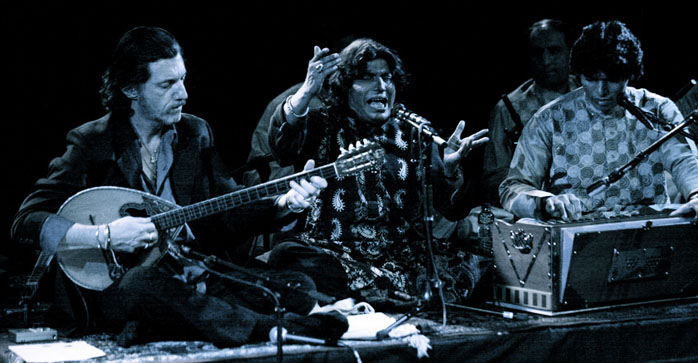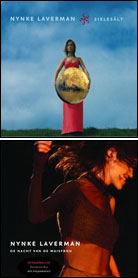This review page is supported in part by the sponsors whose ad banners are displayed below |
 |
 |
Aaron XX vs. FirstWatt F5: These machines clearly belonged to the same general school of sound. Having committed many pixels to describing the latter in its feature review, details may be found there. Differences remained of course. Particularly in the upper ranges, the Nelson Pass amp was sweeter even on something as raucous as Rodgrio Y Gabriela. The Aaron retaliated with added bass mass. This perhaps was a function of higher voltage gain and power (the F5 only makes 15.15dB and 25 eight-ohm watts). Audible space with the F5 was more lit up to firmly embed performers in it and surround them with it. The somewhat denser Aaron compacted the same space, incidentally without shrinking subjective stage size. This shifted primary focus on the performers. With the Pass, my perception began with the big picture, then moved inwards onto the musicians. With the Aaron, the focus was first on the performers, then moved out to what surrounded them.
|
 |
Questioning this subtle inversion of attention, I ran a number of discs from Live Manchester & Dublin to Antonio Placer's Cancionista, Dhafer Youssef's new Abu Nawas Rhaspody, Andy Narell's The Passage, Angelo Debarre's Gypsy Unity, Anna-Marie Jopek's Upojenie, Robert de Brasov's Prima Iubire and my usual stand-by cadre of Dulce Pontes (Momentos), Mercan Dede, Renaud Garcia-Fons, Jacques Loussier (Satie's Gnossiennes), Hector Zazou's In the House of Mirrors, Vassili Tsabropolous' Melos plus new addition Titi Robin with Faiz Ali Faiz [below].
|
 |
Whenever the recording allowed, the FirstWatt was keener about retrieving ambient data. This more firmly reestablished recorded space with its reflections, decays and haloes around the performers. This type of presentation requires aeration and a certain looseness or litheness of the musical fabric so you can penetrate between its threads. The XX tightened those same threads. In one sense, that made the presentation more robust and earthy. In another, some illumination dimmed. These were areas of preference rather than right or wrong. Things shifted from leaner, more lit up and spaciously context-centered to denser, thicker and object-focused. That said, they remained in the same general vicinity. Even though my present tastes ultimately favored the Pass amp, I was surprised to note how close the XX came while adding power, a built-in preamp stage and remote control. If you'd been hoping for a Pass Labs INT-150 equivalent in the FirstWatt range, Aaron's XX seems to be a highly credible stand-in that's priced just right, too.
|
|
Tubular detour: With friends over for dinner one weekend, I'd pulled out my big Octave MRE-130 valve monos for an evening of music sharing. Having been on a FirstWatt/Aaron type sound trip/kick for many months, I was shocked to be reminded just how much more intelligible, transparent and resolved those sand amps were at the lower levels which are appropriate for background tunes during a friendly chatty meal. Particularly with speakers of Gallo Ref 3.5 caliber, the congealing and obscuring action of the burly tube amps became painfully obvious at lower SPLs.
|
 |
At room-filling volumes, the push/pull KT88s woke up fully of course. To my ears, they didn't actually pull ahead then but rather, offered an alternate version on sonic reality. Transients, separation and focus were softer but fluidity and billowing increased and the space between the notes filled out. This moved the sound into meatier more rotund territory. It also undermined the heightened lucidity of space and the parallel vitesse where the FirstWatt amp reigned. While the Aaron did trail it, the XX was clearly faster and more incisive than the German tube amps. Given the Gallo Ref 3.5s' potent attributes of speed, time coherence and very high resolution, I felt that the Aaron played more to them than the Octaves. At 1/5th their price, this was good news for realsizers. The not-so-good news? My Esoteric C-03 preamp—at zero gain with its volume control bypassed—still factored during these comparative sessions. How would the XX behave when fed directly from the Weiss DAC2?
|
|
|
Theory might have predicted still better sound. After all, one unnecessary component with its additional cabling had been eliminated. No such luck alas. Run solo, the XX was very direct and immediate. Excellent. That's a quality I'm starting to associate also with DC coupling. My pending custom commission EL84 amps from Sasa Cokic thus run ITs to avoid coupling caps. Back to the XX, particularly on piano and audience applause, it now was harmonically somewhat leaner than at least I desired.
|
 |
As a former valve fancier, I confess to having outgrown the need for—and actually enjoyment of—serious doses of THD meddling. Most days, I now listen to the FirstWatt F5 or J2. I retain my Yamamoto A-09S 300B SET for reference and the occasional fling while the Woo Audio Model 5 services my Sennheiser HD800s brilliantly. In general though, I've gone transistor. (For now. As a parallel monogamist, I reserve the right to experiment and change my mind on a dime.)
|
 |
That said, the iMac-Weiss-Esoteric-FirstWatt-Gallo chain suffered no such harmonic starvation. The Aaron XX as integrated did just a bit. The sound didn't go bluish/cool but somewhat tinkly/tinny on piano and flat/slappy on applause. Figuring that my still newer Weiss DAC2 was perhaps not ideally seasoned yet, I swapped in my Yamamoto YDA-01 converter. This indeed moved the balance back to my usual standard.
As always, strategic component alliances are what assembling a compelling hifi system is all about. In the ASI LiveLine cables, I'd already opted for intrinsically fast signal transmitters.
Any desirable quality can get overdone. Remedies usually are many. In this case, a different DAC did the business because this hadn't been about significant alterations but merely small nudges in a particular direction. When cures are this easy, one deals with merely minor personality traits, not fundamental flaws. Just mentioning the word 'flaw' in this context is an injustice already.
|
|
|
The Aaron XX is best characterized as an energetically lit up device. By this I refer to the absence of buffering or wadding effects which slower less direct circuits suffer by comparison (blaming their coupling caps is convenient and perhaps a contributor or even decisive but things in hifi rarely conform to rules that can be generalized).
|
 |
You could think of the energetic attribute as a blood thinner or temporary caffeine buzz that strips away distance to make you feel closer and more connected. Minus the buzz—that would be hype and as such, inaccurate—it's a quite fitting image for the XX. This immediacy is actually more acute and effective than one sees routinely applied to SETs. Those are fuzzier by comparison and harmonically enhanced, two qualities that actually go hand in hand. The Aaron most assuredly stays clear. To not overdo the 'electrostatic' element in the below system's sound merely required replacing one DAC with another - or running the Ancient Audio Lektor Prime CDP instead of the iMac. Easy.
|
 |
With the DAC2 set to max output voltage, the volume steps on the XX in the actual listening range on the 88dB Gallos were somewhat coarse. At times, they caused greater than desired jumps. Once the Weiss output was trimmed to the next lower setting, all was well. The upshot is that with standard 2V sources, Aaron's attenuation calibration seems spot on. Unusually high source voltages will suffer a bit by not being supported by finer 0.5dB increments.
|
 |
I could neither verify nor debunk the maker's claim for unusual low-impedance load tolerance. I don't own such speakers and consider them flawed by design. I'm honestly not certain what about this circuit would contribute to extra stiffness into punishing loads but Thomas Höhne is vocal about it. Amplifiers in the XX's price range that properly drive such speakers are certainly far from ubiquitous. It makes this claim well worth investigating.
|
|
|
Summing up: Aaron's XX is the perfect amplifier for those lusting after speed and high transparency but who also insist on sufficient body without an upstream injection of tubes. Not quite as finely resolved particularly in the upper harmonics as the best FirstWatt amps, the XX is nonetheless cut from the same sonic cloth and offers a somewhat more potent bottom end. The amp's lucidity is very high but not at the expense of sterility. Benign high resolution is one fitting descriptor. Another approach would talk about close-to-stage directness to describe not soundstaging effects but the attitude of sounds at their source before room interactions and distance shave off energies.
|
 |
The XX is blessedly free from the affordable sins one often expects in the transistor sector. Besides being built to high standards and offering good connectivity with six line-level inputs and variable and fixed outs, it worked flawlessly during its stay, i.e. utterly without self noise or hiccups. The only thing missing was a display dim/off should the blue backlighting intrude on a mood. The only burp was a small turn-off fart which likely signifies the absence of output relays. Those are terribly minor nits in this scheme of things. It means I enter the chorus line to join our Polish contributor Wojciech Pacuła. He already expressed open admiration for the company's N°.1.a and called the bigger Sovereign Glory amp he subsequently reviewed better than his reference Luxman. In Casa Chardonne, the XX came surprisingly close to the FirstWatt F5. In my book, that's very high praise. Whatever Thomas Höhne did to shave off 40% from the bigger N°.1a doesn't seem to have subtracted anything vital. Good show indeed!
|
 |
|
Quality of packing: Very good.
Reusability of packing: A few times.
Ease of unpacking/repacking: A cinch.
Condition of component received: Flawless.
Completeness of delivery: Perfect.
Human interactions: Good.
Pricing: Good value.
Final comments & suggestions: None. This is a mature product. |
 |
|
 |